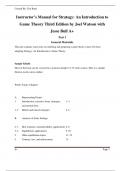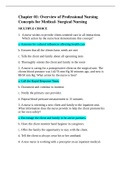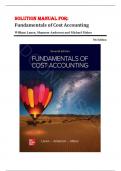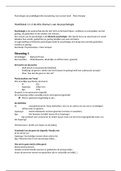Examen
Instructor’s Manual for Strategy: An Introduction to Game Theory Third Edition by Joel Watson with Jesse Bull A+
- Cours
- Établissement
- Book
Instructor’s Manual for Strategy: An Introduction to Game Theory Third Edition by Joel Watson with Jesse Bull A+..
[Montrer plus]












